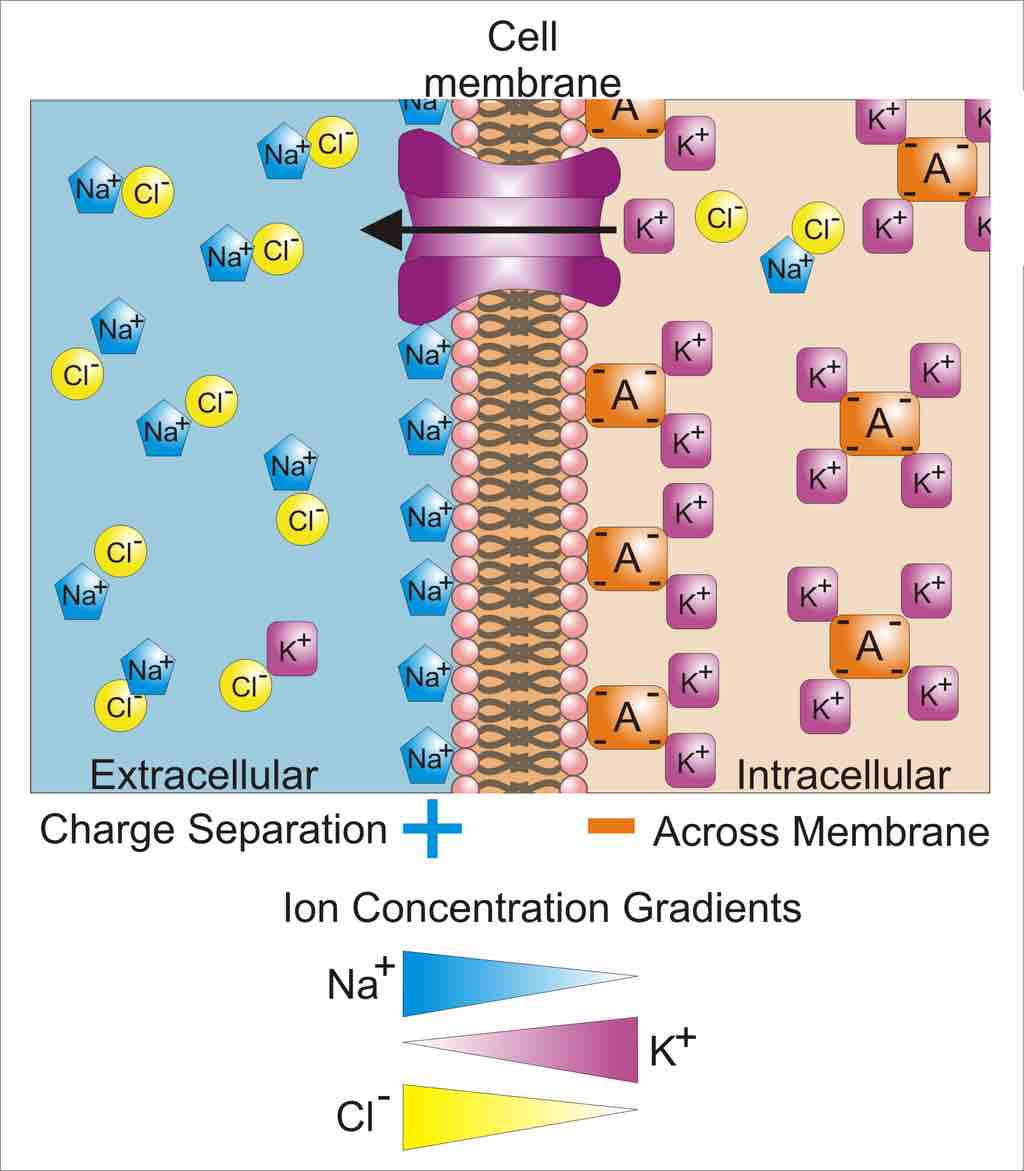Concept
Version 11
Created by Boundless
Principles of Electricity

Cellular Membrane
Differences in concentration of ions on opposite sides of a cellular membrane lead to a voltage called the membrane potential. Many ions have a concentration gradient across the membrane, including potassium (K+), which is at a high inside and a low concentration outside the membrane. Sodium (Na+) and chloride (Cl–) ions are at high concentrations in the extracellular region and low concentrations in the intracellular regions. These concentration gradients provide the potential energy to drive the formation of the membrane potential.
Source
Boundless vets and curates high-quality, openly licensed content from around the Internet. This particular resource used the following sources:
"Basis of Membrane Potential2."
http://en.wikipedia.org/wiki/File:Basis_of_Membrane_Potential2.png
Wikipedia
CC BY-SA.